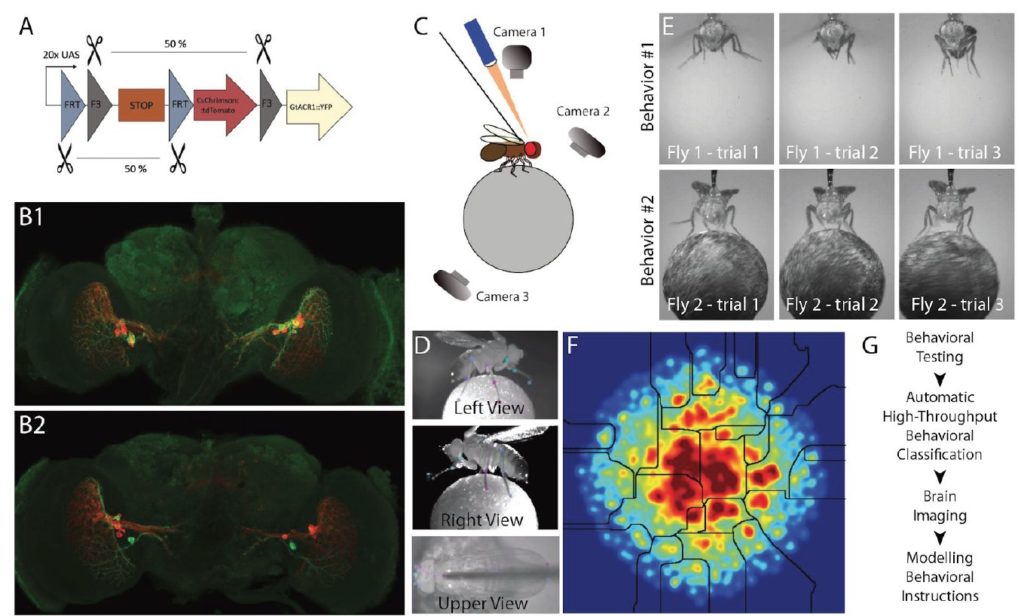Remarkably little is known about the behavioral role of network computations. Commonly, experiments are designed to give a binary answer by activating or inhibiting an intricately connected group of cells. In nature, however, such perturbations rarely occur in nature, making this type of approach not always instructive. To overcome some of these limitations, we have developed molecular tools and a high-throughput experimental setup that allows addressing, in a combinatorial way, the space of possible behavioral commands a network can elicit, focusing on the lobula plate tangential cell network.

Defining the behavioral instructions of a network. A. Schematic of our binary mosaic optogenetic tool: optoswitch B1-2. Example fly brains expressing optoswitch in LPTCs. Notice the difference in expression patterns. C. Schematic of behavioral setup (tethered fly, illuminated with a focused beam, walking on a styrofoam ball). D. Example images of tethered flies where behavioral postures were tracked (colored dots). E. Two examples of repeatable behavioral output induce through our methodology – fly1: flight initiation; fly2: turning response. F. Preliminary analysis of the behavioral space of tethered wild-type control flies – dimensionality reduction analysis plotted using stochastic neighbor embedding (t-SNE). G. Workflow schematic.